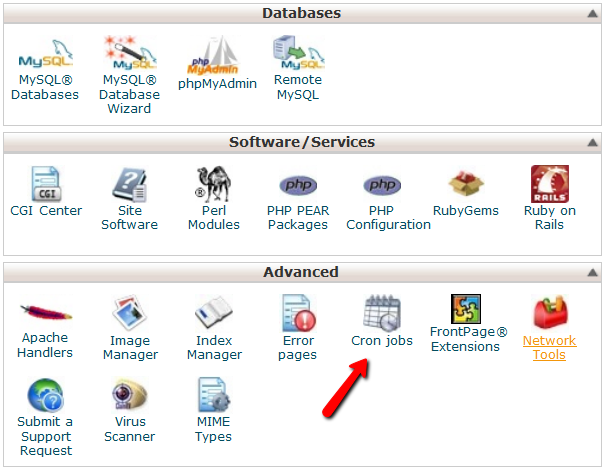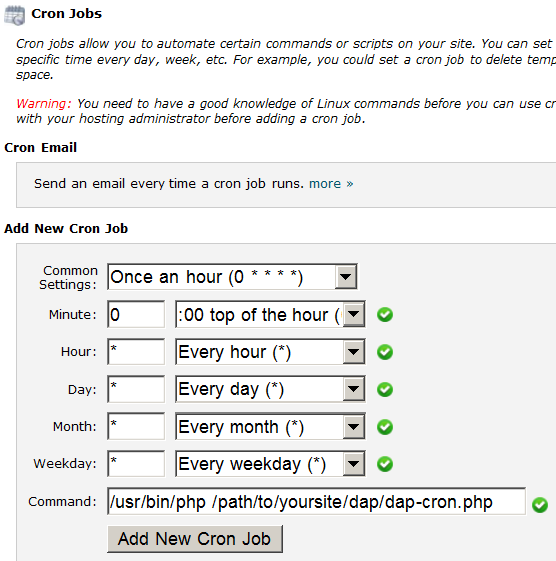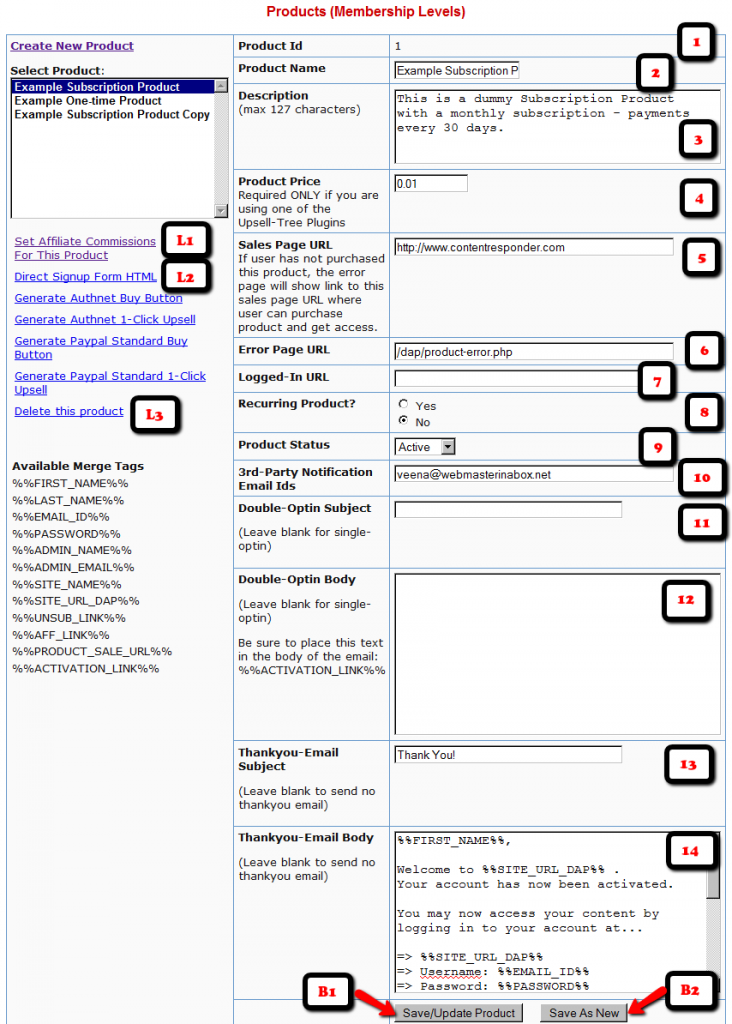12
The Configuration data of your DAP installation can be customized online.
- Log in to DAP as admin at:
http://YourSite.com/dap/
- Click on the “Config” link in the nav bar at the top.
- You will see a drop-down (showing “Basic” by default). You can modify option by option (“Basic”, “Payment Processing”, etc) or view them all together at one time (“All”).
- WARNING: Save each modified config field individually. This means, every time you modify one row of config data, hit the “Save” button at the end of that row. You will not be able to change multiple rows and have all of them saved all at once. It has to be saved row by row*.
- Modify fields like “Site Name”, “Admin Name”, “Admin Email” etc.
NOTE: The reason why we allow only one row to be “Saved” at a time, is to prevent you from messing up (by accident) config stuff that was already working. So, this way, you can mess up only one row at a time 🙂
See more details about the config screen below.
Config Screen Details
Config > Basic
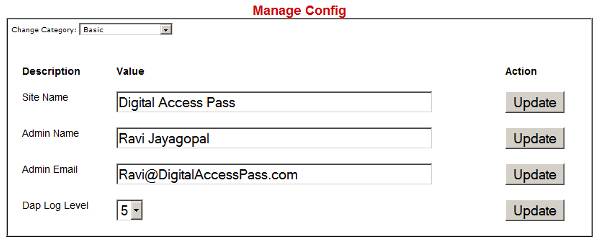
1. Site Name:
This is where you put in the descriptive name for your web site. When sending emails, you may sometimes wish to use a “name” for your site rather than just a domain name. “Welcome to Digital Access Pass”, you can say.
2. Admin Name:
This is the “from name” used in outgoing emails.
3. Admin Email:
This is the “from email” used in outgoing emails.
4. DAP Log Level:
When set to “Log All Activity”, it logs all kinds of verbose details to the logs, to help during installation and troubleshooting. When set to “Log Errors Only” it logs only major errors and issues.
So during installation and setup, set this field to “Log All Activity”. Once everything is up and running and you are ready to launch your site, turn this up to “Log Errors Only”.
Config > Payment Processing
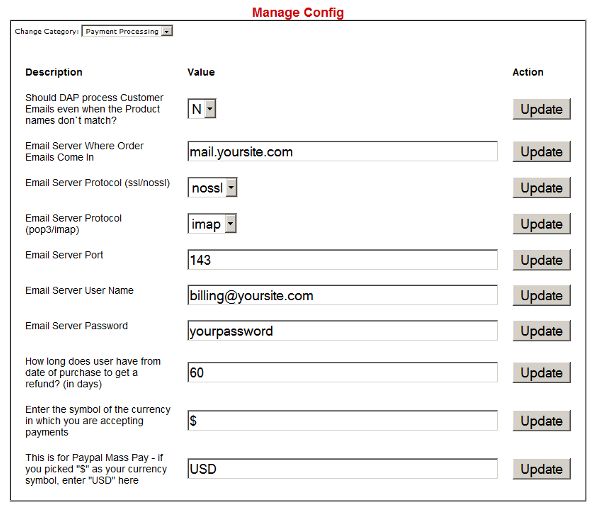
The first 7 fields on this page are required ONLY if you are going to be using a) 1ShoppingCart.com (incl. private labels) or b) ClickBank.
The 7 fields are:
1. “Should DAP process Customer Emails even when the Product names don`t match?”
2. “Email Server Where Order Emails Come In”
3. “Email Server Protocol (ssl/nossl)”
4. “Email Server Protocol (pop3/imap)”
5. “Email Server Port”
6. “Email Server User Name”
7. “Email Server Password”
If you are going to be using 1ShoppingCart.com or ClickBank, then read the explanation for the fields below. But Iif you are going to be using Paypal, then you can skip reading the explanation for these 7 fields.
So here is the documentation for the Payment Processing tab, which includes the 7 fields.
The way DAP integrates with 1ShoppingCart (1SC) and ClickBank (CB) is via Email. Whenever someone makes a purchase through 1SC or CB, they send you the site owner – what is called a “Payment Notification Email”. This email lets you know that someone just purchased one of your products, and contains the buyer information like name, email address, mailing address, etc.
We call this the email id at which you receive these payment notification emails – as the “Billing Email”. So all you need to do to set up integration between DAP and 1SC/CB, is to tell DAP what this billing email id is, and how to access it, so that DAP can log in to this email, look at all the payment notification emails, pick out the ones you want it to process, automatically create an account for your member on your membership site, and send them an email notifying them how to log in to their account on your membership site and access the product that they just purchased from you.
1. “Should DAP process Customer Emails even when the Product names don`t match?”
Now, you may have multiple web sites with multiple products, and you may be receiving payment notifications for many web sites at one single “Billing Email”. But you don’t want to add them all to your membership site, right? You just want to add those who purchase a specific product, to your membership site. So this field is where you tell DAP whether it should add ALL buyers to your membership site, or just those who purchased a specific product. By default, this is set to “N”, which means, DAP will ONLY process emails where the Product name you created in DAP exactly matches the Product name in the billing email. If you still don’t understand this, watch the videos, and just leave this at the default “N” for now until you understand more.
2. “Email Server Where Order Emails Come In”
This usually looks like “mail.yoursite.com”. You can find this info in your web host control panel, on the “Emails” tab, where you would normally create new email ids for your web site.
3. “Email Server Protocol (ssl/nossl)”: Leave this at the default, which is “nossl”.
4. “Email Server Protocol (pop3/imap)”: Leave this at the default, “imap”.
5. “Email Server Port”: Leave this at the default, “143”.
6. “Email Server User Name”:
This is the actual billing email id. Ex: billing@yoursite.com or whatever email id it is where you get the Payment Notification Emails from 1SC/CB.
7. “Email Server Password”:
This is the password to check that email id.
The following fields apply to everyone, not just to users of 1SC/CB.
8. “How long does user have from date of purchase to get a refund? (in days)”
“60” is recommended and is the default. But you can change this to any number you want.
9. “Enter the symbol of the currency in which you are accepting payments”
Default is “$”. If you are going to be using any other currency, then enter the symbol here.
10. “This is for Paypal Mass Pay – if you picked “$” as your currency symbol, enter “USD” here
If you are going to be paying your affiliates in US dollars, and picked the “$” in field #9 above, then enter USD here.
Config > Advanced
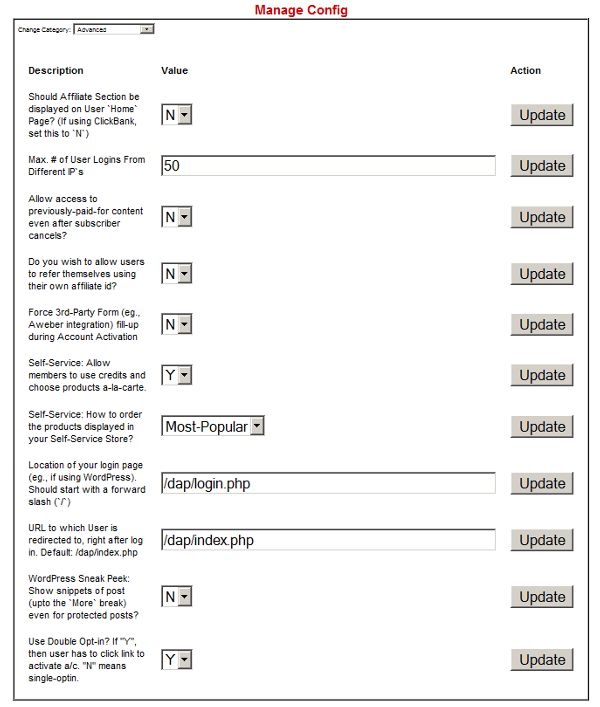
1. “Should Affiliate Section be displayed on User `Home` Page? (If using ClickBank, set this to `N`)
If you are in a mom-and-pop, or non Internet Marketing Niche, where you dont want to confuse users by displaying the affiliate section on the default user home page, then set this to “N”. All users will be signed up as affiliates by default they just wont see their affiliate link and affiliate stats on their user home page.
2. “Max. # of User Logins From Different IP`s”
This is a security feature. This is where you restrict the number of different IPs that a user can log in to their account on your membership site. This is to prevent password sharing, so if you see the email id being used to log in from more IPs than the above limit, then DAP will automatically lock their account, and send them and you an email notifying you both that the account has been locked. You can then either wait for them to contact you by email to get their account unlocked, or if you trust/know the user, you can unlock the account yourself on the “Edit User” screen. Once you unlock the user, both you and the user will get an email notifying you both that the account has been unlocked.
You can customize the content of the lock and unlock notification emails on the Templates page.
3. “Allow access to previously-paid-for content even after subscriber cancels?”
Set to “N” by default. If you want people who have cancelled their account, or unsubscribed from your membership site to have access to content that they had access previously, then set this to “Y”.
NOTE: If you set this to “Y”, then remember this: Say you are offering a free 1 month trial. And you are giving them access to a few videos or blog posts, then even if they cancel their free trial, then they will continue to have access to the 1st months content. If you had set this to “N”, then at the end of the 1st month, if they cancel their trial, then they wont be able to access 1st months content. Thats the difference.
4. “Force 3rd-Party Form (eg., Aweber integration) fill-up during Account Activation”
This is for advanced users only, if you are planning to use Aweber, and want every new member who signs up for a membership in DAP, to also be automatically added to your Aweber account. This requires some advanced set up, which is explained at http://www.digitalaccesspass.com/doc/aweber-integration/ . This is not something you should be looking to set up when youre first trying to set up DAP. This is a power-user feature, and you should get back to this towards the end of your membership setup, rather than at the beginning.
5. “Self-Service: Allow members to use credits and choose products a-la-carte.”
This is for those who have purchased the “Self-Service Store” (SSS) plugin only. If you dont have this, then skip ahead to the next one.
If you have purchased SSS, then set this to “Y” to enable your Self-Service Store where users can cash in their credits and buy the products they want for this month, rather than you (as the site owner) deciding what content they get this month.
6. “Self-Service: How to order the products displayed in your Self-Service Store?”
Again, this is for those who have purchased the “Self-Service Store” (SSS) plugin only. If you dont have this, then skip ahead to the next one.
This setting allows you to control how the products in your SSS are displayed Most popular first, Ascending order by name, etc.
7. “Location of your login page (eg., if using WordPress). Should start with a forward slash (`/`)”
By default, your membership site login page is: http://YourSite.com/dap/login.php
Instead of sending them to this page, you can put the login form on a “WordPress Page” within your own blog, so that the look and feel is always the same, and your member never has to leave the familiar look and feel of your blog just to login.
So if you put the login form on a WP page (not post) called “Login”, then your full link to your login page would be: http://YourSite.com/blog/login/
So to change the login page from the default page, and point it to your custom login page, just remove the domain name section from the above WP login page link, and paste the remaining text in this field. So you would enter”¦
/blog/login
“¦in this field.
8. “URL to which User is redirected to, right after log in. Default: /dap/index.php”
After your member logs in, by default, theyre redirected to http://YourSite.com/dap/index.php
You can change this to whatever URL you want (just leave out the domain name from the link).
9. “WordPress Sneak Peek: Show snippets of post (upto the `More` break) even for protected posts?”
With this turned off (set to “N” by default), when someone visits your blog, they will ONLY see posts that they are “eligible” to view. This applies to your blogs main page as well as individual posts. For instance, if you have 100 posts, and have protected 95 of them, then on your blogs home page, your casual visitor will see only 5 blog posts in TOTAL. They wont even see the titles or bodies of the protected posts until they become a member.
If set to “Y” (Show snippets even of protected blog posts), then your users will see content from each blog post of even protected posts, but only up to the “More” button. Clicking on the “More” link would then ask them to login first before they can access the remainder of the content.
So when Googles spider (or your visitor) arrives at your blog after you publish a new post, it/they will see a summary of the post, instead of being redirected to a login page. This is extremely powerful from an SEO perspective.
10. “Use Double Opt-in? If “Y”, then user has to click link to activate a/c. “N” means single-optin.”
By default, “Double Optin” is set to “Y”. It means, when your member first joins your membership site (she doesnt have an account so far), then only the very first time when an account is being created using her email address, then an “Activation Email” (customize on Templates page) with an activation link is sent to your member. They have to click on the activation link to set their account status to “Active”. This process also records their IP address, in case you need them for as “Anti Spam” proof.
But if you set this to “N”, then whenever their account is first created, their account is directly activated by DAP, and no activation link is required to be clicked, and no activation email is sent to your member.
– Ravi Jayagopal
